Encourage Action

How can we encourage individuals and communities to take action on climate change adaptation ?
Encouraging individuals and communities to take action on climate change adaptation requires a multi-faceted approach that includes education, policy changes, economic incentives, community engagement, and technological innovation. This involves raising public awareness through workshops, media campaigns, and integrating climate change topics into educational curricula. Developing and implementing adaptation policies at local and national levels is crucial, along with promoting green infrastructure and sustainable practices. Offering financial incentives such as tax breaks and grants can encourage the adoption of energy-efficient technologies and eco-friendly products. Support for community-based projects is also essential, including funding for initiatives and capacity building. Fostering community leadership and encouraging civic participation through volunteer programs and town hall meetings can further inspire collective action. Promoting research and development, adopting advanced technologies, and using renewable energy sources are also vital components in this comprehensive approach. By working together, we can build a more resilient future for all.

How can we encourage parents to support climate education at home ?
Climate education is crucial for children's understanding of environmental conservation. Here are ways to encourage parents to support it at home: 1. Provide information and resources like books, websites, and documentaries. 2. Suggest family activities such as nature walks and recycling projects. 3. Model environmentally friendly behaviors like reducing waste and conserving energy. 4. Encourage open discussions about climate change and its impact. 5. Participate in community events that promote environmental awareness and action.

What role do governments play in implementing climate action plans ?
Governments play a crucial role in implementing climate action plans by setting targets, enacting legislation, providing incentives, investing in research and development, regulating industries, raising public awareness, developing infrastructure, supporting innovation, and engaging in international diplomacy. These actions help reduce greenhouse gas emissions, promote sustainable development, and build resilience against the impacts of climate change.

How can educators encourage students to take action on climate change ?
Educators can encourage students to take action on climate change by raising awareness, teaching sustainable practices, encouraging student participation, and fostering a culture of responsibility. This includes providing accurate information about climate change, promoting recycling and energy conservation, organizing events that promote sustainability, and teaching ethical responsibility towards the environment. By creating a supportive community within the school, educators can empower students to make a positive impact on the environment and become proactive individuals committed to protecting the planet.

How can businesses be encouraged to take climate action ?
Climate change is a global challenge that requires collective action from businesses. Government regulations and incentives, public pressure, long-term financial benefits, collaboration with other businesses, and education and awareness campaigns are some ways to encourage businesses to take climate action. By taking action, businesses can reduce their environmental impact, save money on utility bills and disposal costs, and benefit from stable sources of renewable energy.

How can we ensure that climate action benefits both men and women equally ?
Ensuring gender equality in climate action is crucial for addressing the differential impacts of climate change on men and women. To achieve this, we must recognize gender-specific impacts, encourage gender equality in policy making, integrate gender perspectives in adaptation and mitigation measures, enhance access to resources and services, support capacity building and empowerment, address cultural and social norms, and monitor progress to adjust strategies accordingly. By doing so, we can promote a more equitable future where climate action benefits both genders equally.
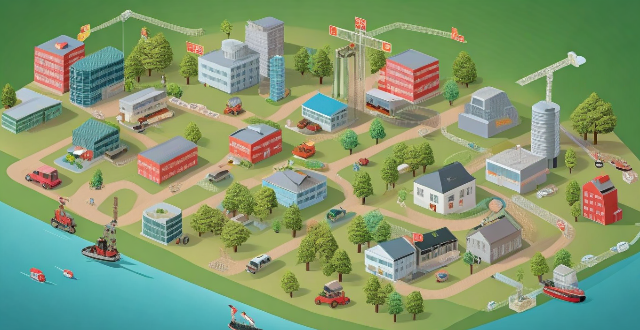
How can we balance economic development with climate action and human rights protection ?
Balancing economic development with climate action and human rights protection requires prioritizing sustainable development, integrating climate action into economic planning, protecting human rights, and collaborating across sectors. Governments and businesses should adopt policies and practices that promote renewable energy sources, reduce greenhouse gas emissions, encourage investment in green technologies, support small-scale farmers, promote fair trade practices, develop national climate plans, invest in research and development of new technologies, provide incentives for eco-friendly behaviors, ensure equal access to education, healthcare, and other basic services, protect the rights of marginalized communities, promote gender equality, enforce laws that protect workers' rights, establish cross-sectoral partnerships, encourage dialogue and consultation between stakeholders, support local initiatives, and encourage international cooperation.

How can we encourage children to be more environmentally conscious ?
To encourage children to be more environmentally conscious, parents and educators can lead by example, educate them about the environment, involve them in eco-friendly activities, and encourage small changes in their daily routine. By doing so, they can help instill a sense of responsibility towards the environment in the younger generation.

How can social media be used to mobilize young people for climate action ?
The text discusses how social media can be utilized to engage and mobilize young people for climate action. It outlines strategies for raising awareness, fostering dialogue, and driving concrete actions through educational content, influencer partnerships, hashtag campaigns, discussion forums, interactive polls and surveys, user-generated content, volunteer opportunities, online activism, and practical tips for sustainable living. The conclusion emphasizes the potential of social media as a tool for social change and calls for its wise use to shape a brighter future.

How can we promote sustainable consumption ?
Sustainable consumption is a key factor in achieving a sustainable future. It involves making conscious choices about the products we buy, the resources we use, and the impact we have on the environment. Here are some ways to promote sustainable consumption: 1. Education and Awareness: Raise awareness about the importance of sustainable consumption; provide information on sustainable products and services; encourage responsible consumption habits. 2. Government Policies and Incentives: Implement policies that support sustainable consumption; offer incentives for sustainable practices; encourage circular economy principles. 3. Corporate Responsibility and Innovation: Encourage corporate responsibility; foster innovation in sustainable products and services; collaborate with stakeholders. 4. Community Action and Collaboration: Organize community events; create networks of sustainable businesses; engage with schools and youth organizations. By taking these actions at individual, community, business, and government levels, we can collectively move toward a more sustainable future where our consumption patterns support rather than harm the planet.

How can we ensure that climate action is consistent with human rights ?
To ensure that climate action is consistent with human rights, we need to adopt a holistic approach that takes into account the social, economic, and environmental dimensions of sustainability. Some strategies include recognizing the interdependence between climate action and human rights, integrating human rights into climate policy, ensuring transparency and accountability, promoting participatory democracy, strengthening legal frameworks, and building capacity and providing support to vulnerable populations. By doing so, we can create a more equitable and just world for all.

How can small and medium-sized enterprises (SMEs) integrate climate action into their CSR without significant financial burdens ?
This guide explores strategies for Small and Medium-sized Enterprises (SMEs) to integrate climate action into their Corporate Social Responsibility (CSR) without significant financial burdens. It emphasizes the importance of understanding the environmental impact, regulatory compliance, consumer expectations, and potential cost savings associated with climate action in CSR. The strategies include energy efficiency measures, waste reduction and recycling, green procurement, employee engagement and education, community involvement and partnerships, and reporting and continuous improvement. These actions can lead to cost savings, enhanced reputation, and a culture of sustainability within the company.

How can young people get involved in climate action ?
Young people can get involved in climate action by educating themselves, joining youth organizations, advocating for change, taking local action, volunteering, and supporting sustainable businesses.

How can education and awareness-raising help promote both climate action and the SDGs ?
Education and awareness play a crucial role in promoting climate action and achieving the Sustainable Development Goals (SDGs). By providing individuals with knowledge and understanding of complex environmental issues, we can empower them to make informed decisions and take action towards a more sustainable future. Educational programs can promote environmental literacy, encourage active engagement, and build capacity for innovation that supports both climate action and the achievement of the SDGs. Strategies for promoting climate action and the SDGs through education and awareness include integrating sustainability into curricula, promoting interdisciplinary collaboration, partnering with community organizations, and utilizing technology and social media.

How can individuals contribute to climate action advocacy ?
Individuals can contribute to climate action advocacy by engaging in educational and awareness-raising activities, making lifestyle changes to reduce their carbon footprint, participating in community initiatives, providing financial support to environmental organizations, and engaging in advocacy and activism. These actions help promote policies and practices that mitigate climate change and adapt to its impacts, ultimately fostering a culture of sustainability.

How can parents encourage their children to be more active ?
Parents play a significant role in encouraging their children to be more active. Here are some ways to do so: 1. Set an example by being active and engaging in physical activities regularly. 2. Create a supportive environment by providing access to sports equipment and encouraging outdoor play. 3. Make physical activity fun by finding activities that your child enjoys and using games and challenges. 4. Help your child set realistic goals for their physical activity and celebrate achievements along the way. 5. Limit screen time and encourage alternative activities instead. 6. Involve your child in household chores such as cleaning, gardening, or cooking to build strength, coordination, and endurance while teaching responsibility and teamwork.

How can parents encourage creativity and critical thinking in their homeschooled children ?
To encourage creativity and critical thinking in homeschooled children, parents should create a stimulating learning environment by encouraging open-ended questions and providing varied resources. Engaging in creative activities like art and music can enhance visual-spatial skills and emotional expression. Promoting critical thinking through problem-solving tasks and family discussions can develop analytical skills. Fostering independent learning through project-based and inquiry-based learning encourages self-directed learning. Parents should also encourage questioning and curiosity, integrating technology into learning, promoting reading, and encouraging risk-taking and accepting failure to prepare their children for future challenges and successes.
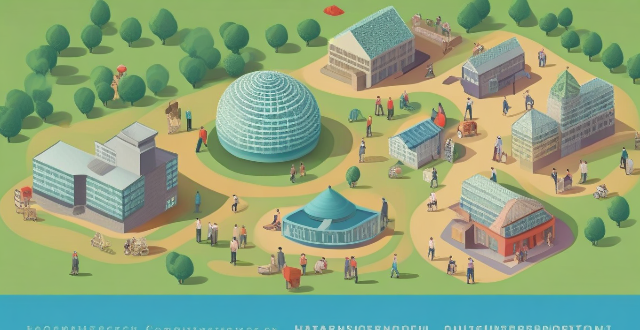
How can we balance the needs of developing countries with those of developed countries when it comes to climate action ?
This article explores strategies for balancing the needs of developing and developed countries in climate action. It discusses economic disparities, environmental impact, finance and technology transfer, capacity building, equitable emission reductions, adaptation support, collaborative research and innovation, and policy coherence as key factors to consider. The article emphasizes that achieving a balance requires recognizing the unique circumstances and needs of both types of countries and implementing strategies such as financial support, technology transfer, capacity building, equitable emission reductions, adaptation support, collaborative research, and policy coherence.

What are the benefits of taking climate action ?
Taking climate action is crucial for the survival and well-being of our planet and its inhabitants. Here are some of the benefits that come with taking climate action: 1. Health Benefits: - Improved Air Quality: Reducing greenhouse gas emissions can help improve air quality, leading to fewer respiratory problems and a lower risk of lung cancer. - Reduced Heat-Related Illnesses: Taking steps to mitigate climate change can help reduce the frequency and intensity of heatwaves, which in turn reduces the risk of heat-related illnesses like dehydration and heat exhaustion. 2. Economic Benefits: - Job Creation: Investing in renewable energy sources like wind and solar power creates jobs in manufacturing, installation, and maintenance. - Cost Savings: By reducing our dependence on fossil fuels, we can save money on energy bills and reduce the economic impact of fluctuating oil prices. 3. Environmental Benefits: - Biodiversity Preservation: Taking climate action helps protect habitats and ecosystems, preserving biodiversity and preventing species extinction. - Water Conservation: Mitigating climate change can help preserve water resources by reducing the severity and frequency of droughts. 4. Social Benefits: - Community Resilience: Taking climate action can help build more resilient communities by preparing for and adapting to the impacts of climate change. - Public Awareness: Climate action raises public awareness about environmental issues, promoting a culture of sustainability and encouraging individuals to make eco-friendly choices in their daily lives. In conclusion, taking climate action offers numerous benefits that extend beyond just protecting the environment. It's essential for our health, economy, and social well-being. By working together to reduce greenhouse gas emissions and adapt to the changing climate, we can create a more sustainable and resilient future for all.
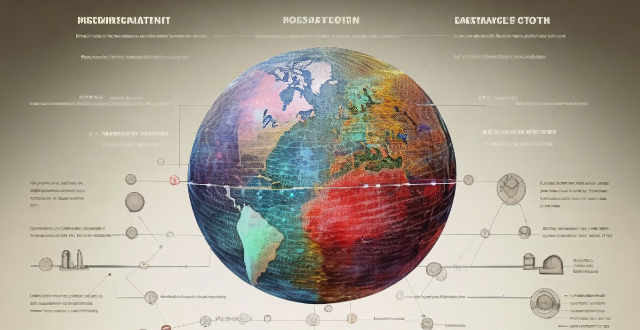
What are some successful examples of youth-led climate action initiatives ?
This article discusses successful youth-led climate action initiatives around the globe, highlighting examples like Fridays for Future, US Youth Climate Strike, and Earth Uprising. These movements have achieved significant milestones in raising awareness, inspiring policy changes, and fostering collective action towards addressing climate change.
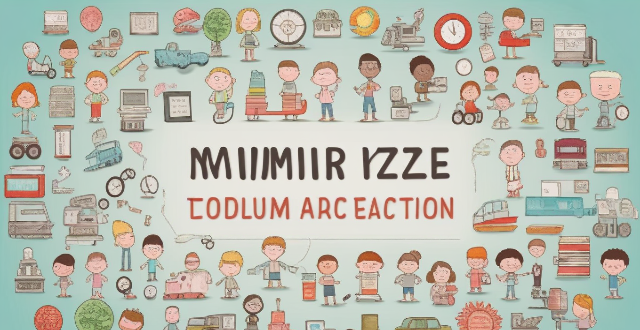
What challenges do young people face when trying to participate in climate action ?
The text summarizes the challenges faced by young people in climate action. These include a lack of awareness and education, limited resources and opportunities, social and political barriers, emotional and psychological challenges, and practical difficulties. Despite these obstacles, it is crucial for young individuals to engage in climate action to create positive changes and contribute to a more sustainable future.

How do people's attitudes towards climate change affect their willingness to take action on environmental issues ?
The text discusses how attitudes towards climate change influence environmental action. It identifies factors like awareness, emotional connection, responsibility, barriers, and incentives that shape willingness to act on environmental issues.

What strategies can small businesses use to encourage positive product reviews ?
In the digital age, product reviews are crucial for small businesses. Here are effective strategies to encourage positive reviews: provide exceptional customer service, simplify the review process, incentivize reviews ethically, leverage social media, monitor and respond to reviews, use email marketing, and showcase reviews on your website.
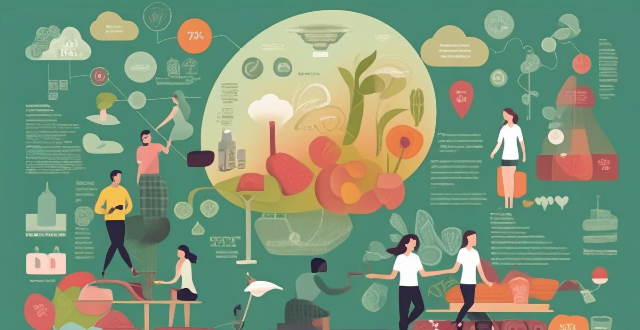
What is the relationship between climate action and sustainable development ?
Climate action and sustainable development are interconnected concepts that aim to create a healthier, more equitable, and prosperous world. They have mutual benefits, as taking action to address climate change can also promote sustainable development. An integrated approach that combines both concepts can lead to better outcomes, considering environmental, social, and economic aspects. Both require a long-term perspective, planning for the future while addressing immediate needs. Recognizing the importance of both concepts and working towards their integration is essential to create a more resilient and adaptable society.

What is the impact of climate action on biodiversity and ecosystems ?
Climate action has both positive and negative impacts on biodiversity and ecosystems. Positive effects include reduction in greenhouse gas emissions, increased awareness and education, protection of key habitats, promotion of sustainable practices, and restoration of degraded ecosystems. Negative effects include displacement of local communities, habitat loss and fragmentation, ecosystem disruption, resource competition, and uncertain long-term outcomes. To maximize the benefits of climate action for biodiversity and ecosystems, an integrated approach that considers both environmental and social factors is crucial.

What challenges do filmmakers face when creating realistic sports action scenes ?
Creating realistic sports action scenes in films is a challenging task for filmmakers. They need to capture the essence of the sport while maintaining authenticity and excitement for viewers. The challenges they face include achieving accurate representation, capturing high-energy action, maintaining audience interest, enhancing visual effects, and adapting to different sports genres. By successfully overcoming these obstacles, filmmakers can deliver captivating sequences that capture the spirit of sports and leave audiences on the edge of their seats.

How can young people balance their education and involvement in climate action ?
Balancing education and involvement in climate action is crucial for young people. Effective strategies include time management, goal setting, and seeking support from peers and mentors. By prioritizing tasks, breaking down goals into smaller steps, and celebrating milestones, young people can achieve a balance between their education and involvement in climate action initiatives. Joining a community of like-minded individuals, finding a mentor, and collaborating with peers can also provide valuable support and opportunities for growth. With these strategies, young people can make a positive impact on the environment while achieving their educational goals.

What strategies can I use to encourage more comments and questions during my live streams ?
Engaging your audience during live streams is crucial to building a loyal community and enhancing the overall experience. Here are some strategies you can use to encourage more comments and questions: 1. Ask for Interaction: Directly invite comments and create a culture of participation. 2. Engage with Your Audience: Respond to comments and use viewers' names. 3. Create Interactive Content: Dedicate portions of your stream for Q&A and use polls or surveys. 4. Host Giveaways and Contests: Organize giveaways where entries are based on commenting or sharing thoughts in the chat, and host contests where viewers need to engage by leaving comments or asking questions to participate. 5. Segment Your Content: Structure your stream with short breaks dedicated to reading and responding to comments, and have specific days where you focus on viewer interactions. 6. Leverage Social Media: Encourage viewers to continue discussions on other social media platforms and share interesting comments or questions from your live streams on social media to encourage more interaction during the next session. 7. Offer Exclusive Content or Perks: Offer exclusive content, merchandise, or perks to viewers who regularly engage with comments or questions, and consider creating a membership program where engaging members receive special benefits. 8. Make It Fun: Include games or challenges in your stream that require audience participation through comments or chat commands, and incorporate viewer comments into your narrative or include them as characters in a story you're telling.

How can we involve vulnerable communities in climate action planning and implementation ?
Involving vulnerable communities in climate action planning and implementation is crucial for creating effective, equitable, and sustainable solutions to the climate crisis. Here's how we can ensure their involvement: 1. Identify and engage with vulnerable communities through community meetings, workshops, and consultations. 2. Build trust and capacity within these communities by involving them in decision-making processes, providing regular updates on progress, demonstrating transparency and accountability, and offering training programs on climate change science, policy advocacy, and project management skills. 3. Collaborate with vulnerable communities to develop solutions that address their specific needs and priorities while being culturally sensitive and respectful of local traditions and practices. 4. Regularly monitor progress towards climate action goals and evaluate the impact of initiatives on vulnerable communities by collecting data on changes in environmental conditions, economic opportunities, and social wellbeing, as well as seeking feedback from community members.

What initiatives are being taken globally to include children in climate action planning ?
Including children in climate action planning is crucial for several reasons. Firstly, it acknowledges their rights and provides them with a platform to voice their concerns about the environment. Secondly, it encourages intergenerational dialogue and collaboration, which can lead to more effective solutions. Finally, involving children in climate action planning helps them develop critical thinking skills, empathy, and a sense of responsibility towards the planet. Here are some initiatives that are being taken globally to include children in climate action planning: 1. UNICEF's Child-Friendly Cities Initiative 2. The Global Kids Climate Forum 3. The Youth4Climate Movement 4. The Fridays for Future Movement 5. The Climate Change Education Programme (CCEP) 6. The Earth Guardians Programme 7. The Eco-Schools Programme 8. The Children's Climate Prize 9. The Global Youth Biodiversity Network (GYBN) 10. The Youth Environmental Leadership Programme (YELP)